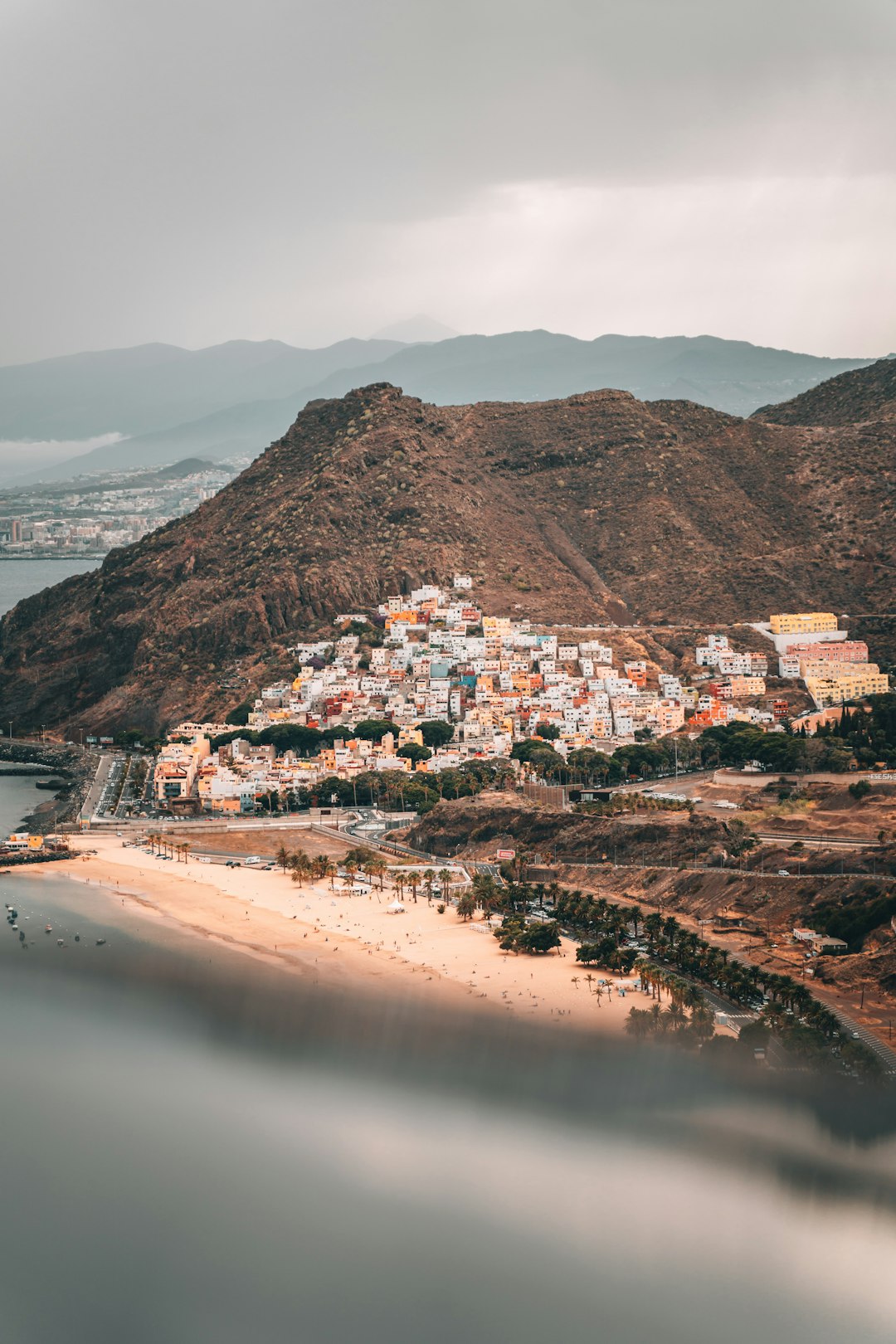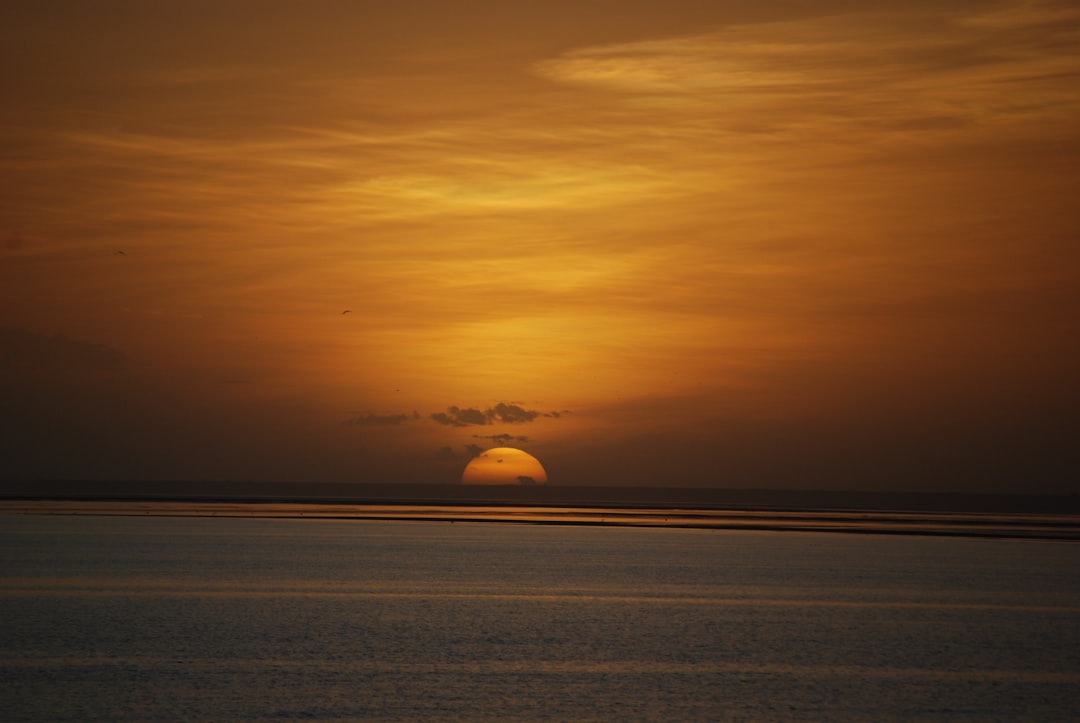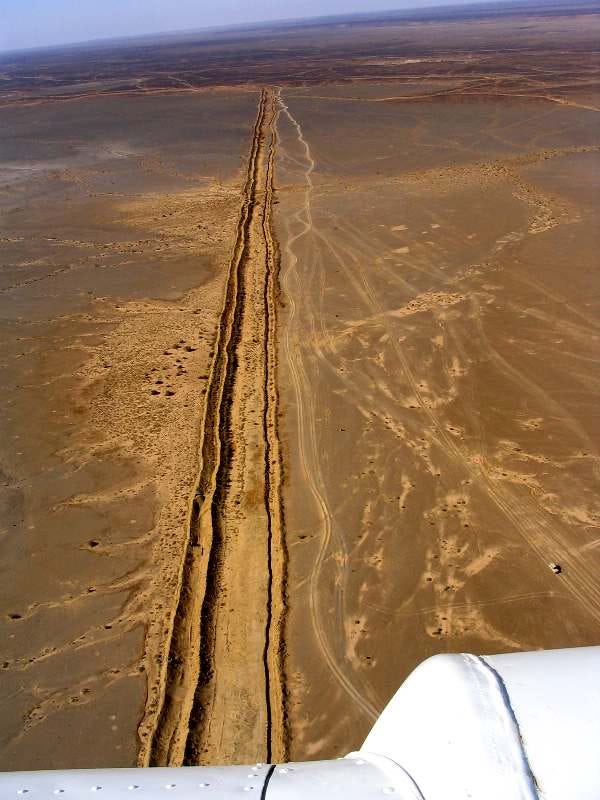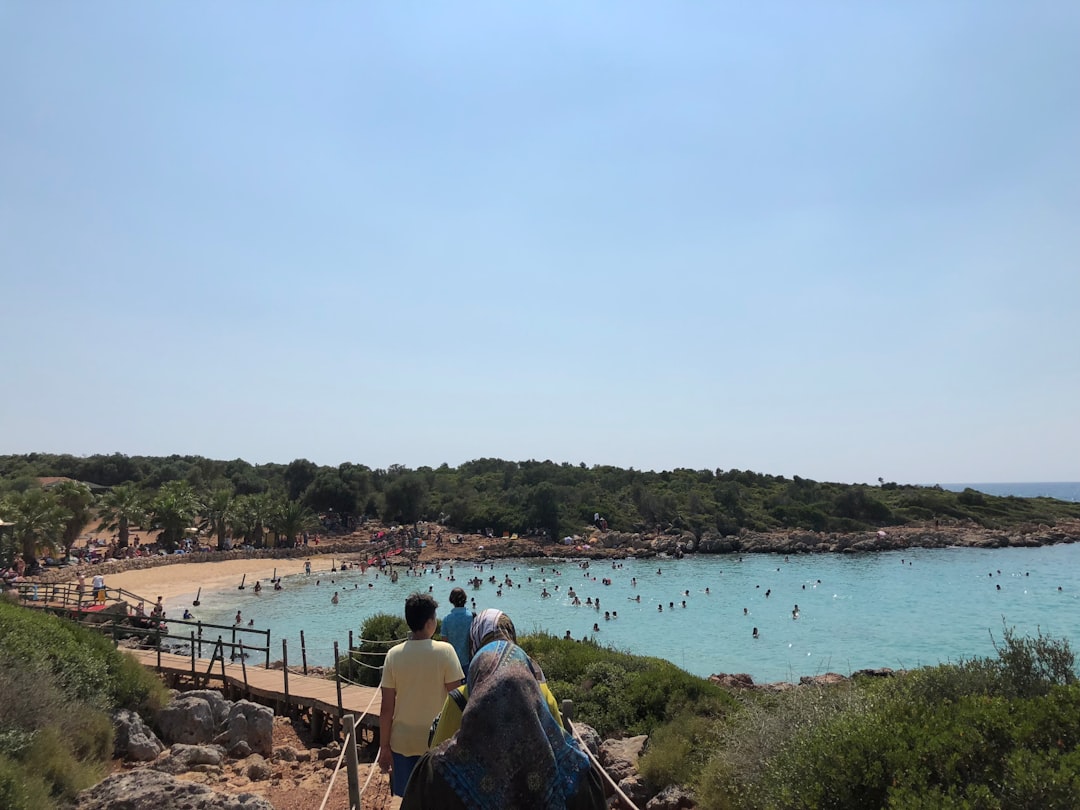Moving Beaches
The intriguing story of the mostly invisible (and often illegal) trade in beaches. Yes, beaches.
The below is a segment I originally wrote for Material World, but which ended up on the cutting room floor. Not enough space, alas. It was going to be part of chapter 2, the one on concrete and construction sand, but I just couldn’t find any way of making it fit. So, rather than waste it, I’m reproducing it here for you. Hope you enjoy it.
Just off the coast of southwestern Turkey is a small, uninhabited islet called Sedir Island. You can only get there by boat but it is well worth the day trip. The waters that lap up on its shores are usually calm and warm, and there is an Ancient Greek temple and a Roman amphitheatre nestled among the pine trees. But most interesting of all is the small bay you’ll find on Sedir’s northern shores: Cleopatra Beach.
The sands here are gloriously soft and creamy, the waters unusually turquoise. The Anatolian coast is beautiful, but it has nothing else quite like this. Indeed, as you paddle out into this small pocket beach you could fool yourself that you’re hundreds of miles from the Aegean Sea, on a Caribbean island or perhaps somewhere off the Egyptian coast.
Which is actually not that far from the truth, for the sands at Cleopatra’s Beach are unlike any others found elsewhere in Turkey. Look at them through a microscope and instead of finding lots of silica of varying colours and angularity you see tiny, shiny, slightly off-white coloured marbles, each about the size of a grain of sugar. These spherical balls are called ooliths - the remains of ancient sea creatures which in many other beaches have at some point passed through a parrot fish. But while there are plenty such sands in tropical latitudes near coral reefs, there is nothing quite like them anywhere nearby. Indeed, the nearest place you’ll find anything similar is 400 miles south, all the way over on the African coast of the Mediterranean.
This is not a coincidence, or so legend has it. For the reason the beach is so named goes back to an old story, that when Mark Anthony was courting Cleopatra, he took her to Sedir Island, only to find that the Egyptian queen was desperately disappointed by the beaches. Seeing her dismay he ordered a fleet of barges - 16 would be enough to manage it, say modern geologists - to transport the white creamy sands from the coast of Egypt up to what is now Turkey.
For all that this sounds like another one of those apocryphal stories, it is actually quite hard to come up with a better explanation. A few geologists have theorised that the sand evolved here naturally, but most of those who have studied the beach (which is to say, a surprising number) have come out on the side of the legend. The sand grains, they say, were indeed imported here two thousand years ago. Whatever the truth, the Turkish authorities are determined that they be left where they are today. Visitors are asked to wash their feet in basins before leaving the beach to keep the white ooliths from leaving the island.[1]
Cleopatra’s Beach may be the world’s first artificial beach, but it is certainly not the last. These days you will find beaches in the middle of cities, in Brisbane, on the Huangpu River in Shanghai, on the River Seine in Paris. In the capital of the Maldives there is a beach whose name is, well, Artificial Beach. Much like their human counterparts, ageing celebrity beaches frequently get the odd nip and tuck. Hawaii's Waikiki beach has, over the past century or so, been supplemented with sand from neighbouring islands, from California's Manhattan Beach and even from Australia. Rio de Janeiro’s Copacabana Beach used to be less than half its current width, but was artificially nourished with 3.5 million cubic metres of sand dredged from the seabed and then dumped in the bay in the 1970s. Most of the beaches along the Florida coast near Miami coast have been replenished with sand from offshore, to the extent that some areas have nearly run out of sand underwater on the nearby continental shelf. These days so many beaches are artificial that it’s hard sometimes to know whether what you’re stepping on was designed by nature or by the local tourism board. Indeed, only in the course of writing this book did I discover that a sandy beach to which I had frequently taken my children while on holiday was not, it turns out, naturally sandy. Such things are rarely advertised.

One exception to this rule is the Canary Islands, the Spanish archipelago just off the African coast. Here the fact that many of these previously rocky shores are now covered with imported sand is sometimes used as a selling point. Playa de Las Teresitas, just north of the village of San Andrés in Santa Cruz de Tenerife is perhaps the most famous example. Stand on this glorious expanse of golden sand stretching from one side of the bay to the other, of palm trees swaying in the breeze, and you might hardly realise that what you are sunning yourself on is essentially a theme park.
For back in the 1960s this stretch of coastline, today one of the most popular in the Canary Islands, was an unexceptional bit of pebbly coastline with a few farms and fishing huts. When the local authorities decided to re-landscape the beach, few realised quite how much work it would involve. First some of the locals had to be relocated, a complex legal process which was still grinding through the courts half a century later. Next, the bay itself had to be remodelled, with some of the surrounding hills flattened and three separate beaches consolidated into one. An enormous breakwater dam had to be constructed, partly because the waters here used to be quite treacherous and partly to ensure the imported sand wasn’t blown away. And as for that sand, well, that had to be sourced as well. Not only were the local sands black, volcanic grains, they were also too expensive what with all the demand from the construction sector, so the authorities looked elsewhere. Eventually they found a cheap, plentiful supply in what was then Spanish Sahara, the nearby African colony.
Some 150,000 cubic metres were shipped across but no sooner had the sands been offloaded onto the beach and into the remodelled bay than the engineers encountered a fresh problem. The kinds of sands found locally on the island of Santa Cruz had bigger grains and slightly heavier mineral content than the stuff being imported from the Sahara. These precious new blonde grains had a tendency to get whipped up into the wind, blown into people’s faces and, more to the point, being swept off the beach. The fact that the authorities had removed some of the cliffs sheltering the bay from the wind didn’t help.
Nor was the eventual public opening of the beach, on June 15 1973, an instant success. When the locals tell the story these days, it has biblical overtones. The first visitors processed excitedly onto the beach and burrowed their feet into the sand. Suddenly there was one scream, then another, and the visitors went running. There was, it turns out, a plague of scorpions in the sand, as well as fearsome red ants and other creepy-crawlies which had, so the story goes, hitched a ride across with the sand from Africa. Quite how seriously one should take this part of the story is unclear (there were scorpions in Tenerife and indeed Spain long before the sand arrived), but the challenges of maintaining paradise continue to this day. Playa de Las Teresitas has a tendency to leak sand, meaning it occasionally has to be replenished with fresh stock imported from elsewhere.

Where the sands come from these days is an unexpectedly difficult question to answer. Try to find out and you are generally told: “Africa” or, sometimes, “Morocco”, after which people tend to clam up. Why this sensitivity over a few grains of sand? Perhaps because the grains of Playa de Las Teresitas have a backstory that is far less picturesque and carefree than you might have guessed from the brochures.
For replenishing beaches is not the only use to which they have been put. Two hundred miles across the sea, back in the Saharan dunes, those same sands have also been used to build one of the most extraordinary, yet barely-glimpsed structures in the world. The Berm, sometimes known as the Moroccan Wall, is a wall a thousand and a half miles long, made mostly of sand. Look at photos or satellite images of it (type “berm” or “Moroccan Wall” into Google Maps) and there in the middle of the Sahara you see a long, mostly straight, somewhat primitive looking wall, dotted, every so often, with what look like huts or ancient fortifications.

But there is nothing ancient about this wall. It is, in fact, the product of a very modern war that continues to this day - the struggle between the people of Western Sahara and the Moroccan forces occupying most of the country. In 1975, not long after the sand was first sent to the Canary Islands, the Franco dictatorship crumbled and Spain abandoned what was then Spanish Sahara. Rather than establishing an orderly transition, bequeathing Western Sahara, as it is now known, to its resident Sahrawis, the Spanish left a vacuum in their wake, allowing neighbouring Morocco to send in troops and settlers to take control. There was a war, then a ceasefire, and as this book was being written, fighting erupted again.
Morocco argues that it had dominion here long before the Spanish arrived in the first place. It argues that its occupation has nothing to do with the fishing rights that extend all the way down the coastline (this is one of the world’s most plentiful grounds for sardine fishing) or the phosphate deposits which can be mined and refined into fertiliser, or the potential for other minerals, like oil and, yes, sand. Yet its critics accuse Morocco of treating this land as a colony to be stripped of resources, in much the same way as European colonists extracted mineral riches from Africa in previous centuries. Certainly, there is little sign of Morocco allowing the referendum over self-determination which has been repeatedly promised to these people.
The wall of sand, about as long as the distance between London and Istanbul, was constructed during the 1980s in an effort to pen the Sahrawis, nomads who have inhabited this place for hundreds of years, into a sliver of land abutting the Algerian and Mauritanian border. Ringed by barbed wire and dotted with landmines and cluster munitions, it is the longest active defensive fortification in the world. Around 170,000 Sahrawis now live on the south side of the desert wall in refugee camps where conditions are punishing. It is hard to know what is going on on the north side of the wall, occupied by Morocco; western journalists are rarely admitted. But there are frequent reports of arbitrary detention and torture, of mass graves, of hundreds of Sahrawis who have simply disappeared.
This is, say human rights activists, a benighted land where the resources are being extracted against the will of its people. So perhaps it is no wonder that Spain is so reluctant to admit that it is still importing sand from here. But there is no denying the trade data, which shows that Spain still receiving thousands of tonnes from Western Sahara as recently as 2017. We know, in other words, that at least some of the sands on those blissful beaches in the Canary Islands are still being procured from a country defined by the United Nations as the world's last remaining colony.[2]
Frustratingly, working out precisely what is going on here is a challenge, because any goods mined in Western Sahara are typically marked as coming from Morocco, the occupying country. Anyway, much of the sand mining business here and in most of the developing world, is lawless, dominated by small gangs who work in the black market on the fringes of criminality. Half of the sand in Morocco itself - around ten million cubic metres a year - is mined illegally and then smuggled into the open market. Sail along the Moroccan coast and you will see long stretches of what used to be sandy beaches and dunes which are now barren, lunar landscapes. What was once a long beach between Safi and Essouira, a popular tourist spot, is now mostly rocks.[3]
If only a fraction of European tourists are aware that the sands upon which they tread may be imported, an even smaller fraction realise that those sands may come from criminal gangs, or might have been dug out from a land occupied by force, where human rights abuses are commonplace. Still, the sand looks good and feels good underfoot. And it suits most of us - the minerals companies who procure it, the export merchants who ship it, the local authorities and tourist boards and, most of all, the tourists themselves - not to ask too many questions. For the deeper you delve into the material world that underpins our lives, the more uncomfortable the answers and the stickier the compromises.
[1] Amr EI-Sammak, AI Ain and Maurice Tucker, Durham, Ooids from Turkey and Egypt in the Eastern Mediterranean and a Love-story of Antony and Cleopatra
Muhsin Eren, Cüneyt Güler, Selahattin Kadir, Hamdalla Wanasc, Sedimentological, mineralogical and geochemical characteristics of the ooids in Cleopatra (Sedir Island, Gökova Bay, SW Turkey) and Alexandria (NW Egypt) Beach sediments: A comparison and reality of myth of the love
[2] “Trouble in paradise: the Canary Island beach accused of illegally importing sand”, Guardian, 28 Jul 2017 https://www.theguardian.com/world/2017/jul/28/trouble-in-paradise-the-canary-island-beach-accused-of-illegally-importing-sand
Western Sahara Resource Watch https://wsrw.org/en/news/bloody-beaches-sand-salt-and-minerals-from-western-sahara
UN COMTRADE database
[3] United Nations Environment Programme, Sand and Sustainability: Finding new solutions for environmental governance of global sand resources 2019



Moving. Anywhere you scratch, you find the world to be an unhappy place. Maranatha.